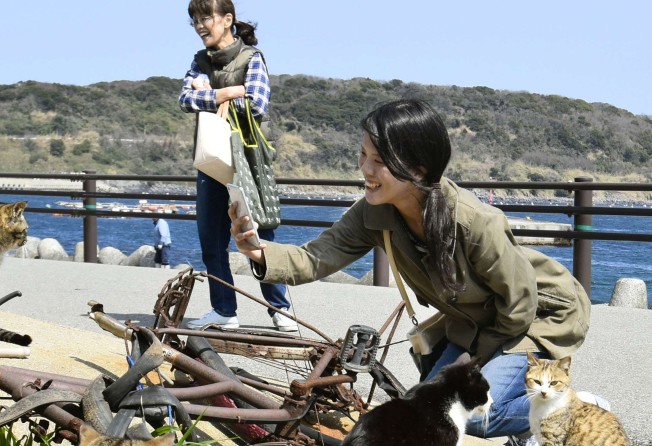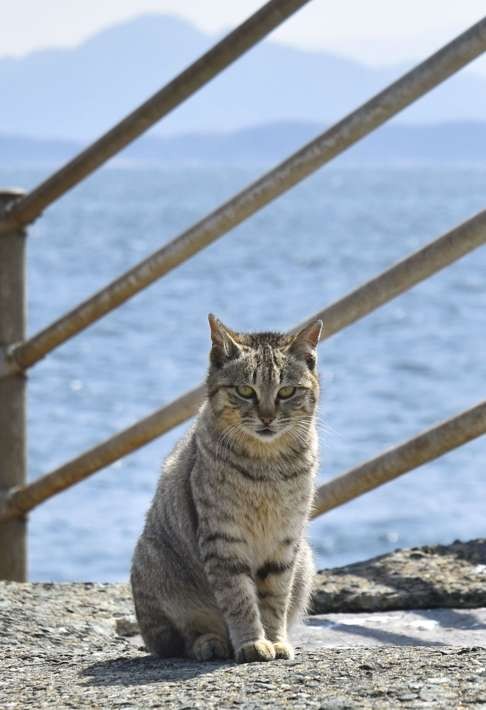How Japan’s Cat Heaven Island became a tourism magnet, and what locals think about it
A tiny island off Fukuoka has seen a surge in domestic and foreign tourists drawn by its population of stray cats. While it has boosted the economy, some islanders fret about the visitors’ behaviour and the loss of tranquillity

Japan is making headlines with a craze for stray felines on a tiny isle known as Cat Heaven Island, 20 minutes by ferry from a port near the city of southern city of Fukuoka.
Ainoshima, an island in the Genkai Sea reached by boat from Shingu, has seen a startling change of late as groups of women, foreign tourists and other cat fanciers visit the fishing village to watch its stray cats strut.
Although islanders welcome the attention and significant economic impact on local businesses, there have also been complaints about visitors not behaving properly as they ignore signs that the feeding of cats is prohibited, throw litter on the streets, or cause other nuisances for locals.
About 100 cats live on the island, which has a circumference of a little less than 6km and is inhabited by about 280 people. The tourist boom only began about a year ago, with anglers the only visitors to the island previously.
It’s not Japan’s only cat island in Japan. There is another, Tashiro island, in Miyagi prefecture.

The cats can immediately be seen lying and frolicking about when visitors disembark at the port. The faces of tourists light up as they snap photos or bend down to stroke the cats.
On one clear March day, a ferry with the capacity for 150 people that makes round trips from the Kyushu mainland was packed with parents and their children, groups of women, foreign tourists and other cat enthusiasts.
“On days like successive holidays we can’t accommodate them unless we employee extra vessels. It’s an amazing change,” said Kiyokazu Mifune, 46, the ferry’s captain who lives on the island.
Haruka Izu, 26, a vocational student in the city of Miyazaki, said, “All of the cats are friendly and playful. I’m glad I came here.”
Kiriko Chinen, 25, a company employee from Okinawa, agreed. “The atmosphere with the cats living on this tranquil island is wonderful. I want to come again,” she said.
Business has been booming for Ainoshima’s sole restaurant and the economic impact from the influx of tourists has been large, to say the least. But the enthusiasm is tempered.
Islanders complain of tourists littering, stopping up public toilets or feeding the cats. Foreign visitors especially appear to be causing a headache.
“It’s great that our island has become famous but it’s no good if they disrupt our tranquil way of life,” said a man in his 60s who lives on the island.
The town of Shingu has even posted signs in Japanese, English and Korean that explicitly say not to feed the cats.
An official of the town’s industrial development section said, “We want to make sure everyone can coexist so there is no friction between the islanders, the cats and the tourists.”